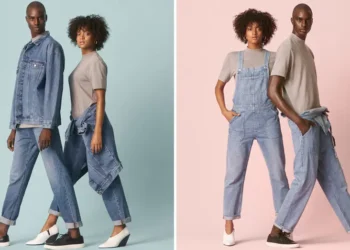In a world where fashion often pushes the boundaries of skin exposure, burkinis, full-body swimwear designed for modesty, are making waves as a symbol of both faith and freedom. For Muslim women, the burkini is more than just a swimsuit; it’s a statement of identity, dignity, and inclusion.
What Is a Burkini?
A blend of the words “burka” and “bikini,” the burkini is a lightweight, quick-dry swimsuit that covers the body from head to ankle while leaving the face, hands, and feet exposed. First created in the early 2000s by Australian-Lebanese designer Aheda Zanetti, the burkini was intended to give Muslim women the freedom to enjoy water activities without compromising their religious beliefs about modesty.
Today, burkinis are not only a staple in Muslim swimwear but are also embraced by women of all faiths and backgrounds who prefer full-body coverage for personal, cultural, or medical reasons.
Modesty Meets Modern Style
Gone are the days when modest swimwear meant dull or shapeless garments. Modern burkinis now come in sleek designs, vibrant prints, bold colors, and even eco-friendly materials. From sporty cuts for active swimmers to fashionable styles with ruching, mesh panels, and coordinated hijabs, burkinis have evolved into a chic, empowering alternative in the global swimwear market.
In fashion hubs like Dubai, Istanbul, and even London, high-end brands are now including burkini lines in their collections. And in Africa, particularly in coastal Muslim communities across East Africa and North Africa, local designers are blending traditional patterns with modern swimwear technology to cater to women seeking both style and spiritual comfort.
The Controversy and the Comeback
Despite its growing popularity, the burkini hasn’t been without controversy. In 2016, several cities in France attempted to ban burkinis on public beaches, citing secularism and public safety concerns. The move was met with global backlash, with human rights advocates calling the ban a violation of religious freedom and women’s rights.
Ironically, the burkini stands for exactly what fashion should support, choice. For many Muslim women, it’s not about being forced to cover up, but rather the freedom to swim, surf, and enjoy the beach without sacrificing their beliefs.
Burkinis in Uganda and East Africa
In Uganda, where modest fashion is gaining momentum among Muslim and Christian women alike, burkinis are slowly entering the market. Boutique stores in Kampala, Mombasa, and Dar es Salaam are stocking more modest swimwear, while online platforms like Instagram, TikTok and Jumia offer a wider selection.
Local designers are also tapping into the market, with some fashion entrepreneurs customizing burkinis for clients, adding African print accents, and tailoring fits to suit different body shapes. As more women embrace active lifestyles through swimming, beach outings, and spa visits, the demand for inclusive swimwear is only expected to grow.
A Win for Body Positivity and Diversity
One of the most empowering aspects of the burkini is its role in promoting body confidence. In a world obsessed with the “perfect beach body,” burkinis allow women of all sizes, backgrounds, and beliefs to feel comfortable, beautiful, and included at the pool or beach.























